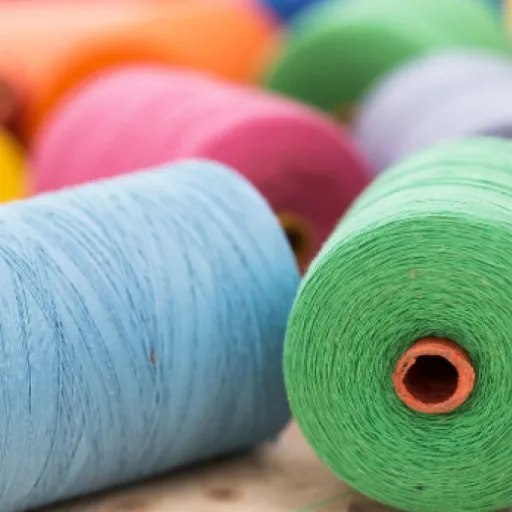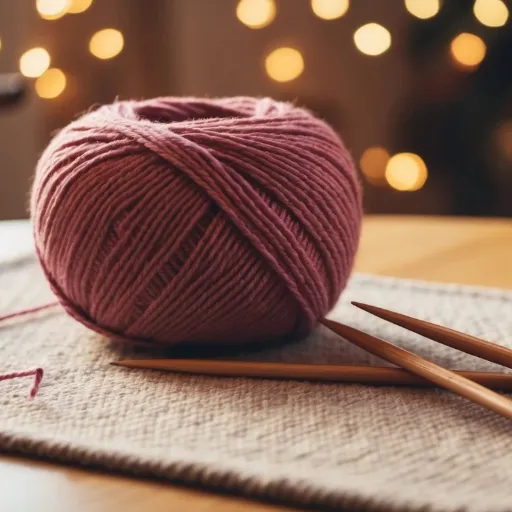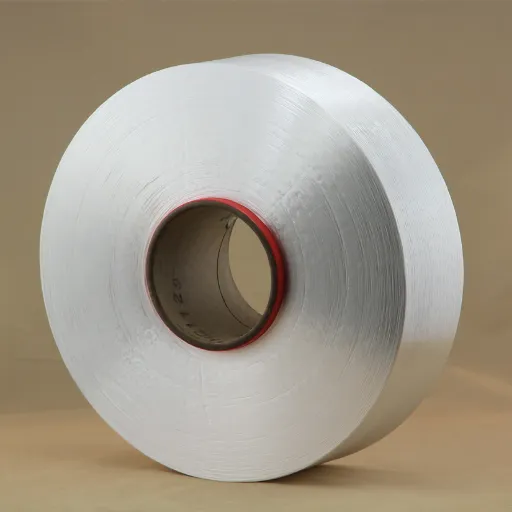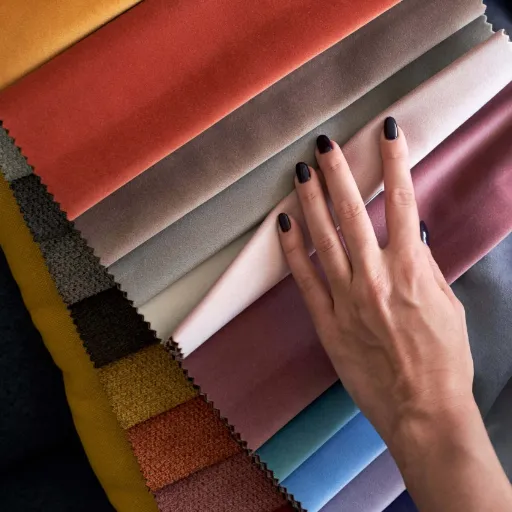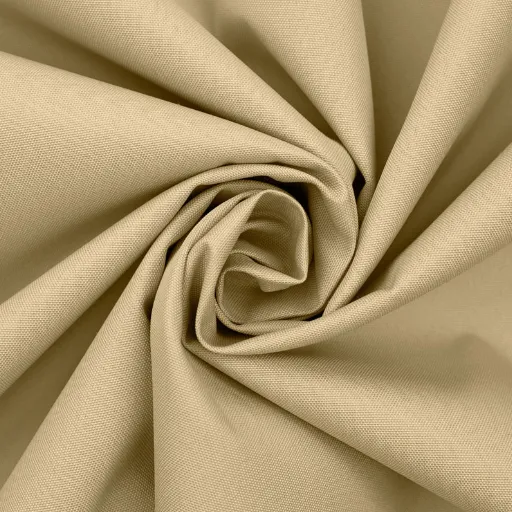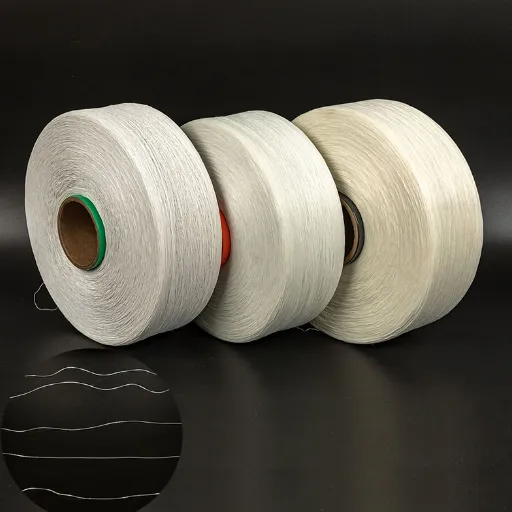The deciding factor in most crafting projects is usually one important choice—the selection of the right material. The discussion about the advantages and disadvantages of acrylic yarn versus wool is a common debate among cooler dealers, knitters, and crocheters. There are various conditions the two fibers can meet, including characteristics like feel, strength, price, and care, but how do you determine the winner for your upcoming piece? This paper will cover the very basics of the two and simultaneously list the good and bad sides of each. Regardless of your experience as an artist or a hobbyist, come along and let us together investigate these highly rated fibers, so we can give you the proper tips on how to select and dabble with a free spirit.
Defining Acrylic Yarn and Wool
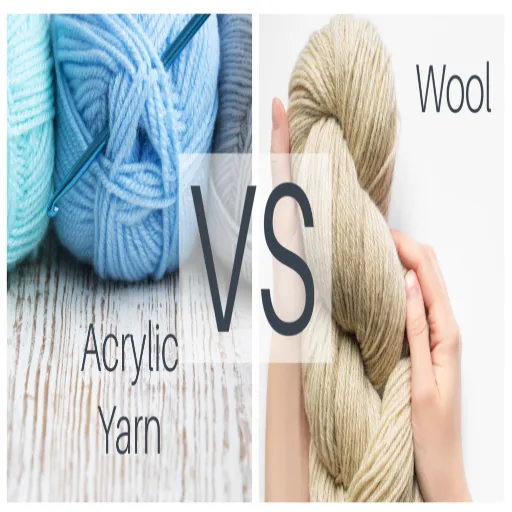
Acrylic Yarn
Acrylic yarn is a man-made fiber produced through a process that uses polymers, which are similar to natural fibers like wool in terms of their qualities. It is lightweight, somewhat resistant to moths and mildew, and very affordable and easy to care for, making it a widely used fiber for various projects.
Wool
Wool, in contrast, is a natural fiber obtained from the fleece of animals, particularly sheep, and is hence the most common source. Its primary characteristics are softness, warmth, and breathability, along with the ability to retain heat even when wet. Wool is environmentally friendly; hence, it is often used to make sustainable and versatile products for crafting purposes.
Acrylic Yarn: Characteristics and Uses
Acrylic yarn, a synthetic fiber, is considered one of the best options due to its low cost, long life, and easy maintenance. It is ideal for projects like blankets, scarves, and sweaters made for daily use since it is highly resistant to stains, fading, and pilling. While it does not have the breathable or insulating properties of natural fibers, acrylic yarn is still light and can imitate the softness and texture of wool if appropriately processed. One of the main benefits of acrylic yarn is its easy availability; it is in demand for its variety of colors, textures, and weights, which are suitable for both beginner and advanced crafters. Besides this, it is also machine washable, which makes it very practical for items that require frequent washing, such as children’s clothing and home decor.
Wool: Characteristics and Uses
Wool is a natural fiber, which is mainly obtained from sheep, though some types of it also come from goats, alpacas, and other animals. Due to its great insulating ability, the wool effectively retains heat, making it perfect for winter clothing and cold-weather accessories. The fabric is also breathable, moisture-wicking, and odor-free, thus providing comfort through temperature fluctuations. Wool is also robust and stretchy, which allows it to keep its shape for a long time. It is commonly made into clothing such as sweaters, coats, and scarves, but also into blankets, upholstery, and other home-textile products. Its amazing capability to keep the body temperature stable and luxurious texture make wool a must-have material in the textile industry.
Key Differences Between Acrylic Yarn and Wool
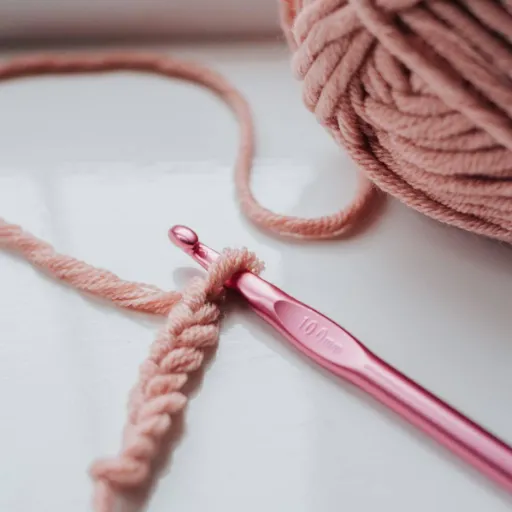
| Characteristic | Acrylic Yarn | Wool |
|---|---|---|
| Origin | Man-made fiber derived from oil | Natural fiber taken from sheep and other animals’ coats |
| Softness and Comfort | Usually imitates wool’s softness but does not offer the same warmth or breathability. | Naturally very soft and provides excellent warmth |
| Durability | Durable, pest-resistant, and not affected by moths | With proper care, it will last but may develop holes and lose its softness due to bug damage |
| Care Requirements | Can be washed in a machine and dries fast | Usually requires special treatments, like hand washing or using specific washing cycles. |
| Cost | Affordable option for cost-sensitive projects | Generally, much pricier than acrylic yarn |
Texture: How to Tell the Difference
Texture is the most noticeable difference when comparing acrylic yarn and wool. Wool usually provides a natural, soft, and slightly fibrous sensation, which may vary depending on the type of wool. Perfect quality wool, such as Merino, is exceptionally soft, whereas the coarser ones may give an itchier feeling when touched. Acrylic yarn, on the other hand, which is synthetic, usually has a smoother and less textured feel. Although it may not have the natural elasticity and depth of wool, it often maintains a consistent feel across different brands. To tell the difference, just run your fingers over the material gently—wool would feel warmer and more natural, while acrylic would feel lighter and slightly cooler.
Environmental Impact: Acrylic vs Wool
In comparing the environmental impact of acrylic and wool, wool consistently emerges as the more sustainable choice, provided it is obtained responsibly. Wool is a natural, biodegradable material, which means that it decomposes naturally without causing pollution from harmful microplastics at the end of its lifecycle. Furthermore, the process of sheep shearing, when practiced humanely, can be a renewable and sustainable one. In contrast, acrylic yarn is a synthetic fiber produced from petrochemicals, and its production involves energy-intensive processes that ultimately lead to environmental pollution. Moreover, acrylic is a significant source of microplastics that find their way to water systems and cause damage to marine ecosystems. However, one point to consider is that unsustainable or irresponsible wool production may lead to overgrazing and deforestation. Thus, the environmental-friendliness of each material is highly dependent on the methods used, such as the sourcing of wool and minimizing the use of synthetic fibers in the manufacturing process.
Choosing the Right Material for Specific Projects
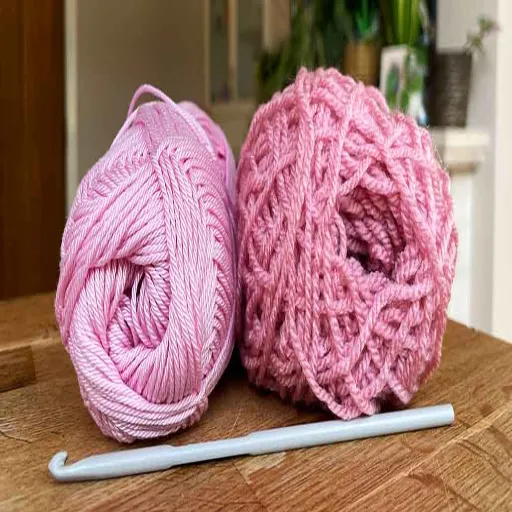
When selecting the appropriate material for specific projects, it is essential to analyze the purpose, durability, and environmental impact of each choice. For projects requiring warmth and breathability, ethically produced wool from responsible suppliers is an excellent natural and eco-friendly option, as it meets ethical production standards. For lightweight and weather-resistant requirements, synthetic fibers such as acrylic could be appropriate, yet their environmental impact should be scrutinized seriously. Finding the right balance between functionality and sustainability is pivotal; choose the materials that provide the least ecological damage while meeting the project’s needs.
Baby Items: Use Acrylic for Safety
Acrylic yarn is one of the best materials for making and using baby products. Its softness, durability, and hypoallergenic nature are the main reasons why it is chosen directly for baby items like blankets, stuffed animals, and so on. In the case of natural fibers, baby skin may experience or feel irritation more easily. In contrast to acrylic, this is not likely to happen, and it is machine washable, making it very accommodating for busy and struggling caregivers. As indicated by the recent survey done on the usage of materials for baby products, safety and care are the two top priorities for parents. What’s more, the characteristic of acrylic to resist fading and easily maintain vibrant colors guarantees that baby items not only remain lively and attractive but also through wash after wash. Nevertheless, if a conscientious lifestyle is to be adopted, the use of sustainable acrylic should be considered whenever feasible.
Home Decor: Choosing Between Acrylic and Wool Yarn
In home decor projects, both acrylic and wool yarns have their pros and cons, and ultimately, it is up to you to determine your specific requirements and preferences. Recent search data shows that many people prefer acrylic yarn because of its low price, long life, and a vast spectrum of colors to choose from. For instance, acrylic yarn is great for throw blankets, decorative pillows, and wall hangings, as it holds up under regular use and laundering.
Conversely, wool yarn is usually in demand for its heat, softness, and the luxurious feel of nature, which makes it an excellent choice for the hessian or the craft of cozy-type rugs or cushion covers. By the same token, the wool is more costly and requires careful maintenance, but comfort and insulation are guaranteed by its usage. Thus, the choice eventually narrows down to what you value—whether it is price and toughness or the organic beauty and softness. Moreover, eco-friendly consumers can make sustainable sourcing or blending materials that are more attractive in any case.
Environmental Considerations
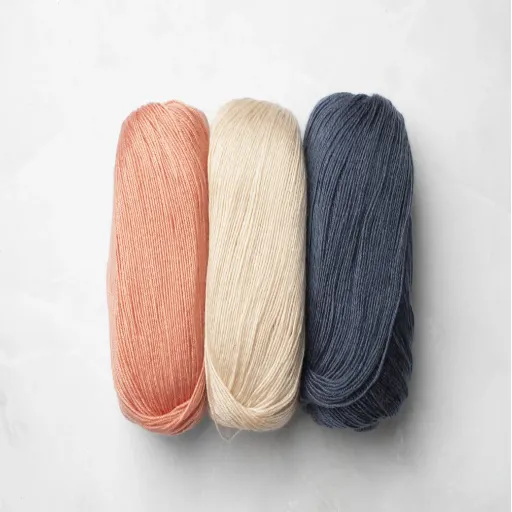
Wool is usually regarded as an environmentally friendly material, while synthetic fibers such as polyester are branded the opposite. Wool is a sustainable and nature-friendly resource, while its source determines its eco-friendliness. However, the production of wool involves land use and greenhouse gas emissions from livestock. In contrast, polyester, a synthetic fiber, is made from fossil fuels, which worsens the problem of resource depletion and causes microplastic pollution along the way. It is a good practice for consumers to choose products made from either sustainably sourced wool or recycled polyester to curb environmental impacts.
Sustainability: Wool vs Acrylic
When it comes to sustainability, wool and acrylic have very different environmental scenarios, but some points need to be considered nevertheless. Wool, a natural and renewable resource, after its lifecycle, decays and thus, contributes very little waste to the landfills. Meanwhile, livestock farming has a significant environmental impact through land degradation, water consumption, and methane emissions. Another thing is that acrylic is a manmade fiber that is created from petroleum-based sources. Its production requires a lot of energy, and as its total lifespan extends, its non-biodegradable nature leads to pollution and microplastic release.
In the end, the decision regarding the use of wool or acrylic is based on how they are made and their intended use. With wool, the best option is to choose products that are from ethically and sustainably farmed sources. In the case of acrylic, using recycled ones would lessen the demand for virgin fossil fuels. Responsible consumer choices and the development of sustainability in the industry play down the environmental effects of both materials.
The Importance of Recycling and Ethical Sourcing
Recycling and ethical sourcing form the foundation of the battle against global environmental challenges and the pursuit of an eco-friendly future. Among all the advantages of recycling, the best known are the savings of natural resources, the reduction in the volume of waste sent to dumps, and the release of fewer greenhouse gases into the atmosphere. For example, recycling one ton of paper can save about 17 trees and 7,000 gallons of water. The reverse is true for ethical sourcing, which guarantees the least possible environmental impact and the proper treatment of workers when obtaining materials and products. When both practices are adopted, consumers and businesses can create a great demand for sustainable goods, encourage more open supply chains, and drastically cut their ecological footprints. The cohabitation of recycling and ethical sourcing is a significant turning point in the pursuit of a green lifestyle.
How to Choose Based on Your Needs

When selecting products that match your requirements, first figure out what matters most. If you aim to lessen your ecological footprint, then go for products that are either made of recycled materials or have green certifications. In terms of morality, select the brands that tell you where they get their materials and that have fair labor certifications, the latter, in this case, being more critical for you. Never forget to check the company’s values and practices before making the final decision to ensure your choices align with your beliefs. Don’t hesitate to spend more on a quality item that will last, rather than on several low-quality products that will just end up in the trash.
Budget: Acrylic for Affordability
Acrylic, with its durability and cost-effectiveness, has become a highly chosen material in the production of various products, from furniture to garments. The fact that it is a synthetic material allows producers to make it at a lower price than natural materials, while also granting them the freedom to use creativity almost limitless in terms of texture and color. Acrylic is not environmentally friendly, biodegradable or natural alternatives being a better choice. The main point is to find a middle ground between your budget needs and environmental concerns when making a decision. Recycled acrylic products are the best bet if you can find them, as they help reduce the environmental impact without needing a price increase.
Maintenance: Care Requirements for Acrylic and Wool
Acrylic is easy to care for as it is machine washable and quick to dry. I consider it a low-maintenance product. My choice is to wash it in cold water cycles; however, to avoid any unnecessary wear and tear. Compared to acrylic, wool is a more delicate material and therefore needs more careful handling. I usually wash it by hand in cool water or use a wool detergent for a gentle cycle to conserve its softness and structure. It is essential to dry wool flat to prevent stretching or misshaping. I am then able to enjoy the longevity and good looks of both materials by doing this.
Reference Sources
Here are five professional and authoritative reference sources that you can use to confirm the accuracy of your article on “acrylic yarn vs wool”:
- A research on yarn and fabric characteristics of acrylic/wool/angora blends
This study reveals the properties of acrylic fiber and its blends with wool and Angora rabbit fiber, enabling readers to understand the characteristics of these materials. - APPLICATION OF ACRYLIC YARN AS A MEDIUM OF VISUAL EXPRESSION
The study presents a detailed discussion of the properties of acrylic yarn and its potential applications in textile design, allowing for the visualization of its use. - The evaluation of mixed yarn fabrics of Gonometa postica silk, Acrylic, and wool
The evaluation considers the performance of mixed yarn fabrics made from the three mentioned fibers and provides a comparative analysis of their properties. - Wool as a technical fibre
This publication in a peer-reviewed journal discusses the technical applications of wool, highlighting its unique properties and uses. - Handbook of Adhesion
Although this book is not directly centered around yarn, it is still an authoritative source containing short articles on material science that might pave the way for a better understanding of the properties of acrylic and wool.
Frequently Asked Questions (FAQs)
What are the main differences between acrylic and wool yarn?
The main differences between acrylic and wool yarn lie in their composition and properties. Acrylic is a synthetic fiber made from polymers, while wool is a natural fiber derived from sheep. This results in wool being more breathable and insulating, whereas acrylic yarn is often more affordable and easier to care for. Additionally, wool tends to be softer than acrylic, though many quality acrylic yarns can rival wool in comfort.
Can people with wool allergies use acrylic yarn?
Yes, people with wool allergies can safely use acrylic yarn. Since acrylic is a synthetic fiber, it does not contain the proteins found in wool that can trigger allergic reactions. Individuals who find wool irritating can often enjoy knitting or crocheting with acrylic yarn without any adverse effects.
Which yarn is better for making a baby blanket: acrylic or wool?
Acrylic yarn is often recommended for baby blankets due to its ease of care, affordability, and hypoallergenic properties. While a wool blend can also be a great option, pure wool might not be as practical for everyday use, as acrylic yarn tends to be machine washable and dries quickly.
How can you tell the difference between wool and acrylic yarn?
To tell the difference between wool and acrylic yarn, you can look at the texture and feel of the yarn. Wool is typically softer and warmer, while acrylic has a smoother and sometimes shinier appearance. Additionally, wool is more elastic and can retain its shape better than acrylic, which may feel stiffer and less resilient.
Is acrylic yarn more durable than wool?
Acrylic yarn is generally more durable than wool, as it is resistant to moths and does not felt easily. However, wool is naturally flame-resistant and offers excellent insulation. The choice between acrylic and wool may ultimately depend on the specific project and desired characteristics of the finished piece of yarn.
What type of yarn should I use for socks: acrylic or wool?
For socks, many knitters prefer using a wool blend or merino wool due to its moisture-wicking properties and warmth. However, acrylic socks are also an option, especially for those looking for a budget-friendly alternative. Quality acrylic yarn can provide good durability but may not offer the same level of comfort and breathability as wool.
What are the advantages of using acrylic yarn?
Acrylic yarn is easy to work with, affordable, and available in a wide range of colors and textures. It is also lightweight, machine washable, and quick-drying, making it a practical choice for many projects. Additionally, for those who are allergic to wool, acrylic provides a comfortable alternative.
Can I mix acrylic and wool yarn in a project?
Yes, you can mix acrylic and wool yarn in a project. Many knitters and crocheters enjoy creating wool blends for added warmth and comfort. Combining these fibers can result in a unique texture and appearance, allowing for creative freedom in your work.
What is the best yarn for beginners: acrylic or wool?
For beginners, acrylic yarn is often considered the best option due to its affordability, availability, and ease of care. Acrylic yarn is also less prone to splitting, making it easier to knit or crochet for those just starting. However, as skills improve, many might explore the use of wool and its various qualities.








